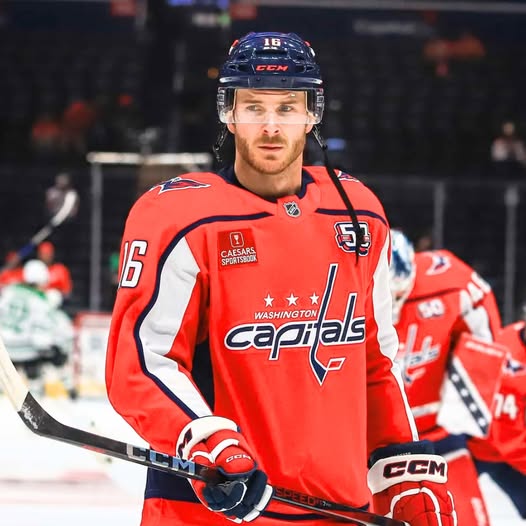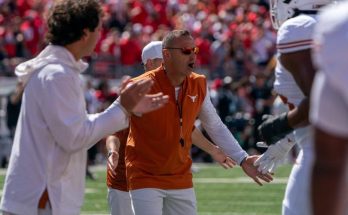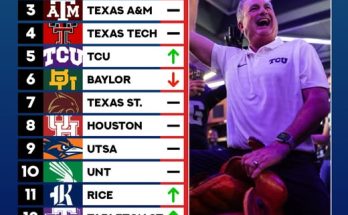The New York Rangers, one of the NHL’s most iconic franchises, have made headlines once again—but this time, it’s not just a tweak or a roster filler. It’s a thunderous, spotlight-stealing move that has set the hockey world ablaze. With Madison Square Garden already primed for a season of intensity, the Blueshirts have brought in a weapon unlike any they’ve had in recent memory—a 6’2”, 215-pound power forward from their Eastern Conference rivals, the Washington Capitals. This isn’t just a trade. It’s a statement. One that screams from the rooftops of Broadway: the Rangers are going for it.
The forward in question has been a staple of the Capitals’ identity—tough, skilled, and always ready to throw his weight around in the offensive zone. Known for his scoring ability, physical presence, and locker-room leadership, his move to New York came out of nowhere, leaving Capitals fans stunned and Rangers supporters breathless with anticipation. Though the front office kept negotiations under wraps until the last moment, insiders are now calling this one of the boldest acquisitions in recent franchise history. The cost? Significant. But the potential payoff could be franchise-altering.
In recent seasons, the Rangers have hovered on the edge of greatness. With a core built around Artemi Panarin, Mika Zibanejad, Adam Fox, and goaltender Igor Shesterkin, they’ve had the skill, the star power, and the flashes of dominance. But something has always seemed missing—a certain edge, a level of playoff grit that separates contenders from champions. General Manager Chris Drury appears to have identified that missing piece and gone out to get it, no matter the cost. This is not a rental. This is not a half-measure. This is firepower. This is Broadway theater with blood, ice, and thunder.
The new forward brings a unique combination of brute force and finesse. At 6’2”, he creates matchup nightmares for opposing defenses. He can park in front of the net, absorb punishment, and still finish with a deft touch. He wins board battles, draws penalties, and wears down defenders over the course of a game. But it’s not just the physicality—he’s got hands, vision, and a shot that can beat elite goalies from distance. He’s the kind of player who thrives in the Stanley Cup Playoffs, when space is scarce and time is even scarcer. In short, he’s exactly what the Rangers have lacked.
For Washington, the trade marks the end of an era. The Capitals have been at the center of the NHL conversation for over a decade, thanks in large part to Alexander Ovechkin’s dominance and the supporting cast around him. This move signals a pivot—a recognition that a retool or rebuild may be on the horizon. Losing a player of this caliber is never easy, especially one who wore the jersey with such pride and productivity. Capitals fans will no doubt feel the sting, particularly when they see him now wearing Rangers blue and chasing glory in the postseason.
What makes this move so explosive, beyond the player himself, is the emotional charge behind it. There is no love lost between the Rangers and the Capitals. Their rivalry, born of playoff battles and division clashes, has always had a simmering intensity. To take a cornerstone from one and plug him into the heart of the other is almost Shakespearean. It’s betrayal for one fanbase, rebirth for another. And for the player himself, it’s an opportunity to etch his name in a different chapter of hockey history.
In interviews following the trade, the new Ranger made clear he’s ready for the challenge. “I’ve always respected this organization. Playing at MSG—it’s electric. I’m here to help this team win a Stanley Cup, plain and simple.” The locker room, by all accounts, has already embraced him. Teammates have noted the immediate energy he brings, both in practice and in games. “You feel it when he’s on the ice,” one veteran said. “It changes the way teams play us.”
Coach Peter Laviolette, who coincidentally coached the player in Washington, knows exactly what he’s getting. That familiarity may have helped grease the wheels of this bold move. Laviolette is known for his ability to get the best out of rugged, skilled forwards, and their reunion on Broadway could prove to be the defining relationship of this Rangers era. With Laviolette at the helm and this new weapon in tow, the Rangers’ offense could take on a much more balanced, punishing tone—one capable of grinding out wins as well as dazzling in open ice.
What does this mean for the rest of the roster? For starters, it likely means a reshuffling of the lines. While the Rangers have had an established top-six group, the addition of this forward creates new possibilities. He could slot in next to Zibanejad or Panarin, giving either line a powerful boost. His presence could also elevate younger players like Alexis Lafrenière and Kaapo Kakko, easing the defensive burden and drawing tougher matchups away from them. In effect, he could act as both a hammer and a catalyst.
Off the ice, the buzz is palpable. Rangers fans, always among the most passionate in hockey, have taken to social media in droves, posting highlights, jersey edits, and bold predictions. Season ticket sales are reportedly surging, and the already fever-pitched energy around the Garden is beginning to boil. You don’t need to squint to see the dream scenario—this forward scoring a game-winner in a pivotal playoff game, throwing his arms in the air as the Garden erupts. It’s what this franchise lives for. And after years of almosts and maybes, they’ve pushed all their chips in.
There are risks, of course. No move this big comes without them. The Rangers had to give up real assets—prospects, picks, possibly even depth players they’d grown to trust. There’s also the challenge of chemistry. Introducing a strong personality midseason can disrupt rhythm. But the front office is betting that the upside far outweighs the downside, and that the hunger in this locker room will quickly absorb any new blood. They’re not building a team—they’re building a machine.
The Eastern Conference is a gauntlet, and the road to the Cup runs through beasts like Carolina, Tampa Bay, and the ever-persistent Boston Bruins. But the Rangers now boast a roster that can punch back. Their skill has never been in doubt. Now, they’ve added muscle, moxie, and a killer instinct that could change everything. The message has been sent—to fans, to rivals, and to the league as a whole. New York is not content with status quo. They are ready to hunt.
The NHL is a league built on moments. Trades like this create those moments. They stir fanbases, alter power dynamics, and ripple through the calendar months ahead. One bold decision, one seismic move, can change a team’s fortune and rewrite their legacy. For the Rangers, this trade is more than just acquiring a player. It’s about identity. It’s about rewriting the story that began decades ago and continues with every skate blade that hits the Garden ice.
He’s bringing firepower to Broadway, alright. And if the vision holds—if the chemistry clicks, and the health holds, and the city embraces him the way it often does with its heroes—this could be a masterpiece. A redemption arc. A championship march. The kind of run that turns legends into icons and players into folklore. The Rangers didn’t just make a trade. They made a promise. And now, the whole hockey world is watching.



